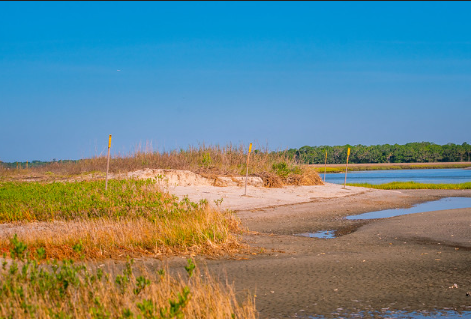Since the dawn of humankind, parenthood has remained one of the world’s greatest enigmas. The experience is so intense, complex and challenging – so driven by the powerful forces of love, protection and frustration – that we struggle to find words to explain it.
To describe the essence of parenthood, we often turn to our avian friends for the right metaphors, because parenting behaviors exhibited by birds are easily relatable and identifiable. For example, when a pregnant woman begins preparing for the birth of a child, we say she has started “nesting behaviors.” We refer to our fathers and mothers as “protectors or guardians of the nest.” Mentors take young protégées “under their wing.” All of this is in preparation for children “learning how to fly” so they can “leave the nest” for college or a career. Suddenly, their parents become “empty nesters.” A child who fails to make a decent living may have to “return to the nest.”
We rely on our community to help us raise our offspring and we count on our social structure – our system of rules, laws and expectations – to assist parents in slowly transitioning their children into productive, responsible grownups. These community responsibilities also extend to protecting the unique and beautiful species that share our space. Coastal South Carolina is home to thousands of migratory birds, but only a few species of shorebirds live here year-round and breed here. Among those elite native breeders are the Willet, the American Oystercatcher and the Wilson’s Plover. The Willet’s numbers have remained healthy into the twenty-first century. The American Oystercatcher was in steep decline, but through concerted conservation efforts is now making a comeback. The Wilson’s Plover’s populations, however, appear to be on the downslide lately.

The reasons for this decrease are myriad, including climate change, catastrophic weather events and human encroachment, to name a few. When it comes to human interactions, the destruction is rarely malicious, but most often due to a lack of awareness. People let their dogs run on the beach off-leash, and the dogs scatter the birds, preventing them from feeding. Beachgoers traipse to a spot away from the crowds to set up their chairs and coolers and unknowingly scare parents off their nests, which causes the eggs to overheat.

Plover’s nests are difficult to notice, because they are like miniature bowls scooped out of the sand, often hidden among the reeds, nestled away from the danger of high tides. To raise awareness and preserve these special coastal residents, Audubon South Carolina has teamed with the South Carolina Department of Natural Resources to set up posts along the dunes that separate the beaches from the marshlands where the Wilson’s Plovers nest. The signs request that visitors respect the boundaries so the birds can have a healthy breeding season. Nolan Schillerstrom, Audubon South Carolina’s Coastal Program Coordinator, has also been educating local schoolchildren about the project. As part of an art competition, Schillerstrom enlisted children in grades four through six from six different Lowcountry schools to draw images that educate people to stay off the dunes during plover breeding season. Those signs are now up at Folly Beach, Sullivan’s Island, Dewees Island, and Harbor Island.
“The Wilson’s Plover is an amazing creature,” says Schillerstrom. No more than eight inches tall and weighing less than two ounces, it has devised ingenious ways to protect its young. If it sees a potential threat, it takes off running, skirting across the sand in the opposite direction from its nest, diverting attention away from its eggs or chicks. If it is still under threat and the predator is close by, it pretends it has a broken wing, essentially taunting, “Come after me rather than my nest. I am vulnerable and an easy catch.”
Schillerstrom says, “I think the Wilson’s Plover is the best bird parent in the world. It’s so tiny and yet so brave.”
So, in honor of Mother’s Day, let’s applaud all the parents out there, no matter the species, who are raising or have raised their young and worked hard to keep them safe. Thank you. We are who we are because you nurtured and sheltered us. You taught us how to survive. And then you gave us wings.
---
You can find more of Lisa's work on the South Carolina Shorebird Protection Project here.
A wildlife photographer and an award-winning freelance journalist for over 30 years, Lisa A. DuBois has penned articles for magazines, newspapers, online journals, podcast, radio and television. Since returning to her home state of South Carolina two years ago, she has concentrated on capturing images of the Lowcountry in all its natural glory. You can see more of her work at lisaaduboisphotography.smugmug.com.



